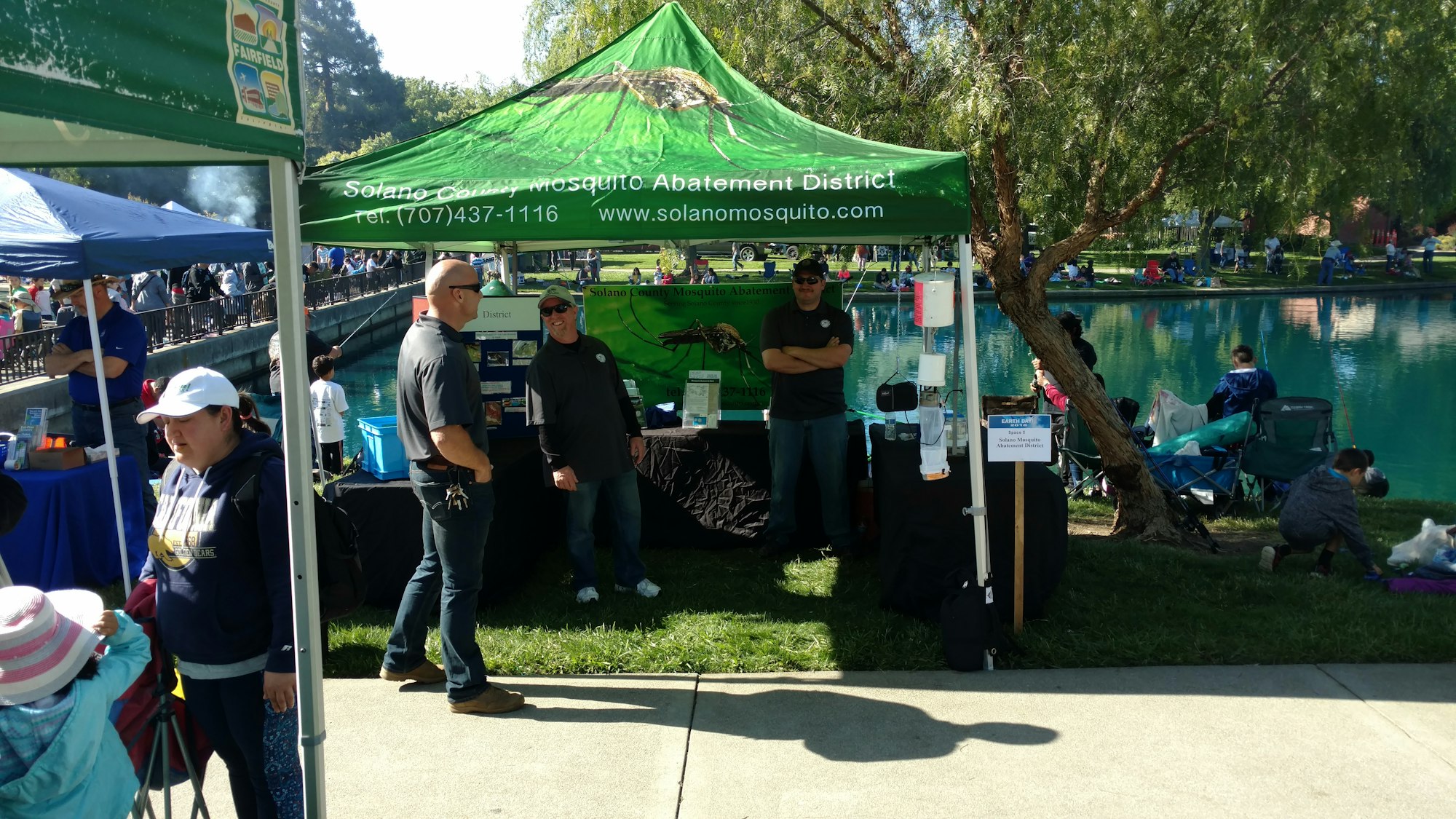About Us

The Solano County Mosquito Abatement District (SCMAD) is a special district responsible for mosquito abatement throughout the incorporated and unincorporated areas of Solano County, which covers over 900 square miles.
The SCMAD was founded in 1930 in order to control the pestiferous Aedes mosquitoes that were being produced in the 184 square mile Suisun Marsh. It was formed according to guidelines set forth by the Mosquito Abatement Act of 1915 and the California Health and Safety Code.
The governing board of trustees of the SCMAD meets on the second Monday of each month at 4:30 p.m., 2950 Industrial Court, Fairfield, CA.
The SCMAD has 10 full time employees consisting of the Manager, Biologist, Supervisor, Administrative Assistant, and 6 Control Technicians.

.JPG?ixlib=rb-1.1.0&w=2000&h=2000&fit=max&or=0&s=f6a12ad5e33309a100b0d5dcdfaa4bd2)
The function of the SCMAD is to control all mosquitoes which may bring disease or harassment to humans and domestic animals. This is accomplished by using the most effective and economical measures that result in the least possible damage to nontarget organisms or to other elements of the environment. A variety of preventive correctional management, naturalistic, physical, and chemical control measures are utilized selectively, singly, or in combination. Preventive measures are emphasized, principally naturalistic and physical control, but chemical control is integrated with other measures as necessary.

Control technicians routinely inspect sources within the SCMAD on a 7 to 10 day cycle. Mosquitoes go through four different life stages: egg, larval, pupal and adult. Only female mosquitoes bite. The protein obtained from the bloodmeal is necessary in most mosquitoes for the completion of egg development. Larval samples are taken by dipping a 1 pint plastic cup attached to an extendable 3 foot handle. The samples are identified in the lab to help determine the method and timing of treatment, if any is necessary. Areas affected by high tides or intentional flooding require more inspections due to the developmental time of the species of mosquitoes involved as well as climatic conditions.

The SCMAD contends with an extremely diversified range of aqautic habitats and temperature regimes. Of the 23 species of mosquitoes known to occur within the SCMAD boundaries, 12 are important either as disease vectors (i.e., capable of transmitting disease) or pests.
The southern boundary of the SCMAD contain the tidal marsh area (over 1200 acres) along San Pablo Bay. During the winter months, 3 species of mosquitoes (Aedes squamiger, Aedes dorsalis and Culiseta inornata) can be produced there. All are strong fliers (5 to 25 miles+) and aggressive biters. The cold water temperatures make control with some chemical formulations difficult due to the slowed metabolism of the mosquitoes.
During the winter months, a very small pestiferous species (Aedes sierrensis) hatches from eggs laid (during spring and early summer) on the moist inner walls of tree holes after being submerged in rainwater. The adult stage is usually not reached until spring. Although weak fliers, the sheer numbers of these tiny pests can create a nuisance in the wooded hillside areas of the SCMAD. Treeholes can exist anywhere from ground level to over 25 feet high, which makes control of the larval stage extremely difficult. This species is the primary vector of Canine Heartworm in Solano County.

The irrigated pasture areas (approximately 20,000 acres) of the northern portion of the SCMAD present another extreme in control problems. During the intense heat of summer, Aedes nigromaculis can complete its life cycle in less than four days. High temperatures can create problems with chemical control due to the faster metabolism in the mosquito and the breakdown of some chemicals (due to heat and ultraviolet rays) from sunlight.
Adult mosquitoes are routinely monitored (7 night cycles) throughout the SCMAD by using a device known as the New Jersey Light Trap. Each week (from April through October) the samples are identified after which the findings are sent to the California Department of Health Services Vector Borne Disease Section. Approximately 29 traps are used throughout the county.


